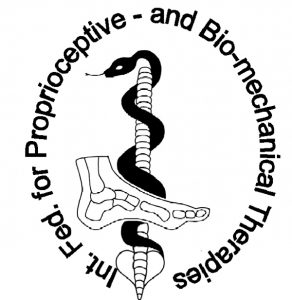Main areas of treatment:
- Complaints of the entire musculoskeletal system
- Disc problems
- Acute and chronic joint pain
- Back pain
- Foot problems
- Bad posture
- Headaches and migraines
PODO-ORTHESIOLOGY
"Podo" means Foot and "orthesiology" means To bring the teaching into some balance. Podo-orthesiology is a procedure in which malpositions, differences in leg length and the resulting incorrect posture (relieving posture) are compensated via the foot.
Due to congenital or acquired deviations in posture, the spine and also other joints are incorrectly loaded. This often leads to severe pain in the back and a number of other disorders and complaints.
By restoring the correct statics (posture), the pain-free interaction of the individual joints and vertebral bodies can be achieved. With correct posture, static deviations improve.
PRINCIPLE
Posture and the shape of the feet have a direct influence on the tension and relaxation of the muscles. There are nerve cells (proprioceptors) in the muscles and tendons.
These receptors register every change in pressure on the sole of the foot. The central nervous system processes the stimulus and gives feedback to the static muscles. This is followed by a muscle reaction that can have both positive and negative effects.
The podo-orthesiologist tries to correct the static problems and achieve a positive change. For this purpose, the patient and his or her foot are given a proprioceptive Podo sole made.
THE SPECIAL FEATURE OF THE PODO SOLE
- the Podo sole is a holistic therapy in which the feet are the basis;
- it stimulates the foot muscles and thus the whole body up to the jaw joint;
- it releases a lot of tension and activates the body's mobility;
- it prevents a relapse into old patterns of movement and posture;
- it is much thinner than conventional orthopaedic insoles and can therefore be worn in any shoe;
- it does not send your foot to (foot) bed early.
WHEN DOES THE PODO SOLE HELP?
- Disc problems
- Pelvic obliquity/ pelvic torsion
- Leg length difference
- Scoliosis and kyphosis
- Shoulder and cervical spine tension
- Temporomandibular joint malpositions
- Knee and/or hip arthrosis
- Instability of the ankles/knee joints
- Hallux valgus
- slight foot deformities
- Pain in the (fore)foot
- Heel spur
There are many forms of therapy for the very common pelvic obliquity. As a rule, tensions and blockages are relieved with the help of therapy. However, if the cause is not eliminated, the complaints return within a very short time. This is exactly where the Podo-Orthesiology an.
WHAT CAN YOU DO?
The podo-orthesiological treatment is only successful if, When the sole is worn all day. So also in house shoes or sports shoes. Special designs are possible for the different shoe shapes. In general, the foot should have enough space to move freely. The heel height should not exceed 4 cm. An existing footbed in the shoe must be removed.
As soon as the complaints no longer occur and the posture has been optimised, the patient can refrain from using the sole in future after consulting the therapist.
SUPPORTING TREATMENTS
In case of acute pain (neck, hip or knee) or after operations with scar disturbance, it is advisable to carry out supportive treatments, such as chiropractic, osteopathy and/ or physiotherapy. The aim of such therapies is to release blocked joints, dissolve scar disturbance fields and thus achieve a faster general improvement.


 SPANISH PHYSIOTHERAPISTS ASSOCIATION
SPANISH PHYSIOTHERAPISTS ASSOCIATION